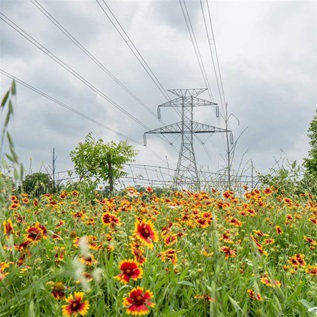To Save Right Whales From Entanglement, Congress Must Follow the Science
Delaying rules to make lobster and crab fishing safer puts whales at high risk of extinction

Editor’s note: This article was updated July 14, 2023, to remove inferences about congressional intent.
At scientists’ last count, only about 340 North Atlantic right whales exist, making them critically endangered. With all of their known deaths attributed to human causes—either entanglement in the ropes of lobster and crab fishing gear or strikes from vessels—right whales now need human-created solutions to survive as a species.
Surprise addition to law will hamper recovery of right whales
Nevertheless, in late December 2022 a group of congressional lawmakers included language in the end-of-year omnibus spending bill that will hamper right whale recovery efforts. The provision was not subject to the normal legislative process and received no discussion in hearings, congressional committees, or public debate.
With this new law, Congress also took the unusual step of overriding the courts. In November 2022, a federal judge ruled that lobster fishing regulations issued by the National Oceanic and Atmospheric Administration’s Fisheries Service (NOAA Fisheries) failed to adequately protect right whales, and therefore fell short of the requirements of the Endangered Species Act and Marine Mammal Protection Act. The ruling directed NOAA Fisheries to correct these weak regulations by the end of 2024. Now Congress has postponed that action by another four years, freezing current rules in place and not allowing NOAA to address this dire situation until 2028.
The law will probably exacerbate the suffering and downward spiral of the species. NOAA Fisheries has acknowledged that it needs to reduce risk of entanglement to right whales by over 90%, but current rules would achieve a reduction of only about 47%. Allowing more whales to die before further recovery efforts can be attempted will force NOAA Fisheries to eventually take even more drastic—and costly—action in 2028 to curtail threats to the species.
Safer fishing gear must be part of the solution
Even with the new law in effect, work continues to save right whales. For example, this recent video shows the dangerous and courageous work of trained specialists who attempt to disentangle a right whale from fishing gear. But such disentanglement is often impossible or ultimately unsuccessful. It can be difficult to track and get close to an entangled whale, and even after a disentanglement, a whale may be too injured or stressed to survive.
The aim must be to prevent entanglement in the first place. NOAA Fisheries can help accomplish this goal, including by closing areas to traditional lobster and crab fishing when right whales are present. And fishermen can help by speeding their transition to modern gear with fewer ropes that can entangle whales. Recently, dozens of fishermen finished a three-month trial of on-demand gear—also called ropeless gear—which they used in an area off Massachusetts that is closed to traditional lobster gear between February and May because of the presence of right whales. On the leading edge of the transition for this fishery, these fishermen are accessing fishing grounds without harming marine mammals, and are providing valuable feedback on the new gear. Fishermen using ropeless gear this winter and spring successfully fished near groups of right whales without any documented incidents. They did not lose any gear and were able to catch, land, and sell lobsters following a similar operation compared with other times of year when they use vertical lines attached to buoys.
The investments that matter now
A silver lining of the right whale omnibus provision was that it authorized increased funding for development and testing of on-demand fishing gear. As our public polling showed, there is widespread agreement among East Coast residents that fishermen should transition to this gear but should not have to shoulder the cost. Congress should continue to fund this transition through annual appropriations, and should follow through on the commitments for resources made in the omnibus bill.
There are also hopeful signs in Congress. Earlier this year, a group of House of Representatives members led by Representative Raul Grijalva (D-Arizona) introduced legislation that would repeal the right whale rulemaking delay—proof that some members of Congress disagree with delaying rules for the lobster and crab fishery and recognize the importance of science-based fisheries management. Grijalva is the ranking minority leader on the House Natural Resources Committee.
And in late March, Canada released its latest iteration of regulations to protect right whales, which include dynamic fishing closures when right whales are detected, gear marking to help determine precisely where entanglements occur, and speed restrictions for vessels. These measures are a reminder that protecting right whales is a responsibility for both countries because the cetaceans’ range stretches from Canada’s Gulf of St. Lawrence to the waters off Georgia and Florida.
Although NOAA Fisheries has been helping to advance on-demand gear, there is more it can do to ensure that this innovative fishing method is viable on a large scale. As we wrote this spring in our official comment on NOAA Fisheries’ Roadmap to Ropeless plan, all on-demand systems must be able to detect the location of other gear so that fishermen can avoid gear conflicts, regardless of which on-demand system they use. To achieve this goal, NOAA Fisheries must develop specifications for interoperability. Congressionally appropriated funds could then support the development and use of effective on-demand gear.
By delaying needed rules or stalling on-demand technology development, Congress will only worsen the problem of too many right whales dying from fishing gear entanglement and other human causes. To ensure that the lobster and crab fisheries can thrive alongside right whales, leadership is required at multiple levels. As we wrote earlier this year, Congress should authorize full funding for research and development of on-demand gear. Pew remains committed to supporting state, federal, and industry actors focused on solutions.
Katharine Deuel is a senior officer and Leah Baumwell is a principal associate with The Pew Charitable Trusts’ conservation Canada project.
Spotlight on Mental Health
MORE FROM PEW
Explore Pew’s new and improved
Fiscal 50 interactive
Your state's stats are more accessible than ever with our new and improved Fiscal 50 interactive:
- Maps, trends, and customizable charts
- 50-state rankings
- Analysis of what it all means
- Shareable graphics and downloadable data
- Proven fiscal policy strategies
Welcome to the new Fiscal 50
Key changes include:
- State pages that help you keep track of trends in your home state and provide national and regional context.
- Interactive indicator pages with highly customizable and shareable data visualizations.
- A Budget Threads feature that offers Pew’s read on the latest state fiscal news.












